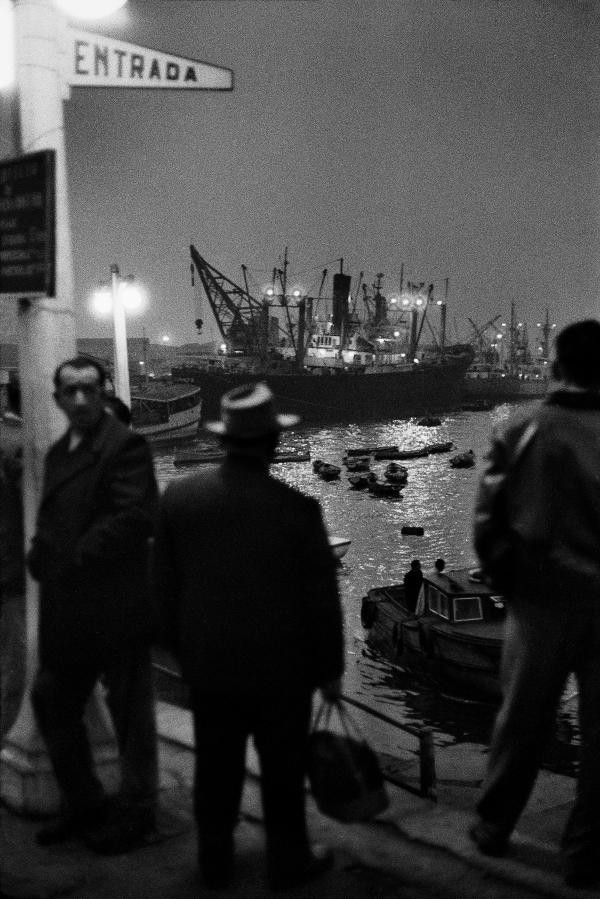Introspection
August 20, 2017 Sergio Larraín Photography Podcast Available Light
Why a Chilean photographer quit fame in pursuit of mysticism and solitude.
 Sergio Larraín, Valparaiso
Sergio Larraín, Valparaiso
Sergio Larraín was never quite a star. But he was a great photographer. Self taught, the Chilean picked up his camera skills during a trip through Europe in the 1950s. When he was 25, the Museum of Modern Art bought two of Larraín’s photographs. At 27, Henri Cartier-Bresson invited him to join the prestigious photo agency Magnum. At 41, he stopped taking pictures.
Sergio Larraín’s black and white shots have soul. They capture not just slices of time but feelings of time; Larraín evokes the taste of the places he discovered. In his book Valparaiso — considered Larraín’s masterpiece — we see a hypnotic vision of the Chilean port city. Full of sensory cues, Larraín carries us in giddy excitement through grainy photos and surreal streets. We see a city of concrete walls and narrow stairs, pictures full of children, alley dogs, and mysterious silhouettes. The sea always glistens in the background. There’s possibility, there’s life, there’s magic. Photos for magical realism.
 Sergio Larraín – Valparaiso
Sergio Larraín – Valparaiso
 Sergio Larraín – Valparaiso
Sergio Larraín – Valparaiso
Valparaiso is one of just four books Larraín ever published. It started as a magazine assignment in the 1960s, when he would hang out in the city with the poet Pablo Neruda.
Over time, documenting Valparaiso became more than that, a long-term personal project, but it wasn’t before 1991 — which is 30 years later — that he turned the photos into a book. What had happened in between is just as fascinating as the photos.
 Sergio Larraín – Valparaiso
Sergio Larraín – Valparaiso
At the cusp of fame, Larraín had met a Bolivian guru, Oscar Ichazo, and joined his school which purported to guide people in search of “pristine enlightenment”. Larraín was smitten.
“That’s where he started to distance himself from photography”, recounts his ex-wife Paz Huneeus in a 2012 interview with the Chilean newspaper La Segunda. “He preferred a life of mysticism and began practicing yoga.”
Larraín turned away from art and fame. He started dressing in all white, moved to a remote mountain village, and inhabited a small house, apparently even with group of disciples. His career as a photographer was effectively over.
Larraín’s mysticism shines through in Valparaiso. The photos are interspersed with handwritten notes, sometimes consisting of just one word like “tranquility”, sometimes entire manifestos:
We are going towards a garbage deposit turning around the sun, inhabited by millions and millions of people attacking and robbing each other permanently, forever … hell, degradation.
Was Larraín’s meeting with the guru Ichazo enough alone to spur such drastic life changes? It had a role, but I think Larraín’s journey began with his photography. Taking photos does something to people.
Analogous to the outward-facing nature of the art comes an inward-facing disposition to reflect. To ponder what you’re shooting, and why. Larraín roamed the streets, shot beautiful pictures of workers, children, animals. The photos affected him. In 1982, Larraín’s nephew wrote a letter asking for advice on becoming a photographer. Larraín’s response is beautiful, and full of introspection. One must stay steady, humble and focused. The conventional cannot distract you.
It’s about vagabonding, sitting down under a tree anywhere. It’s about wandering in the universe by yourself: you will start looking again. The conventional world puts a veil over your eyes, it’s a matter of taking it off during your time as a photographer.
That insight is what makes Larraín’s photos so captivating. He looked right past the conventional, saw the exceptional in ordinary life. There is wonder all around us. In the same letter Larraín urged his nephew to find a place that could bewitch, just as Valparaiso bewitched him.
Valparaiso is always beautiful, get lost in the magic, get lost for days up and down its slopes and streets, sleep in a sleeping bag, soak in reality — like a swimmer in the water — and let nothing conventional distract you.
 Sergio Larraín – Valparaiso
Sergio Larraín – Valparaiso
When the veil was lifted on the world, Larraín saw a reality full of inequality. Looking past convention, clarity shocked him into the world.
“The injustice wore him down,” said Larraín’s son.
The crumbling walls were not permanent, and Larraín saw that the sea was but a backdrop for poverty. Clarity is a double-edged sword. Keep that in mind when you pick up a camera.
This article was first published as part of my podcast Available Light.